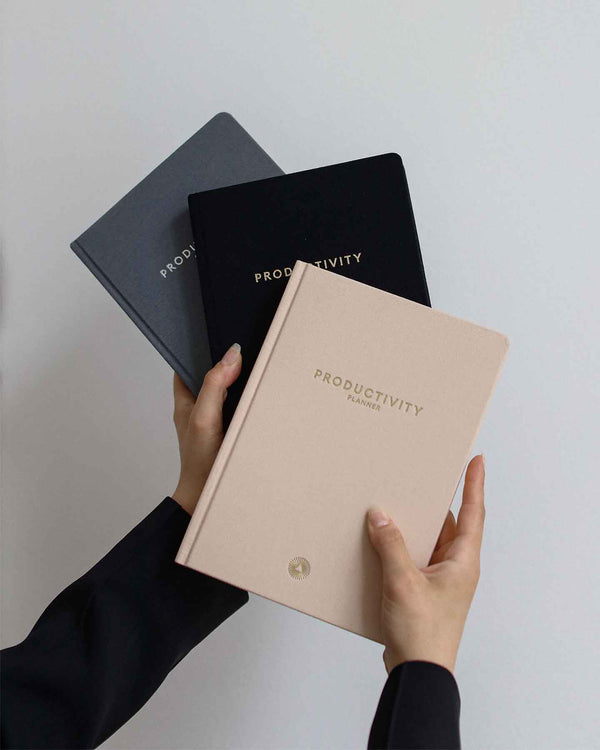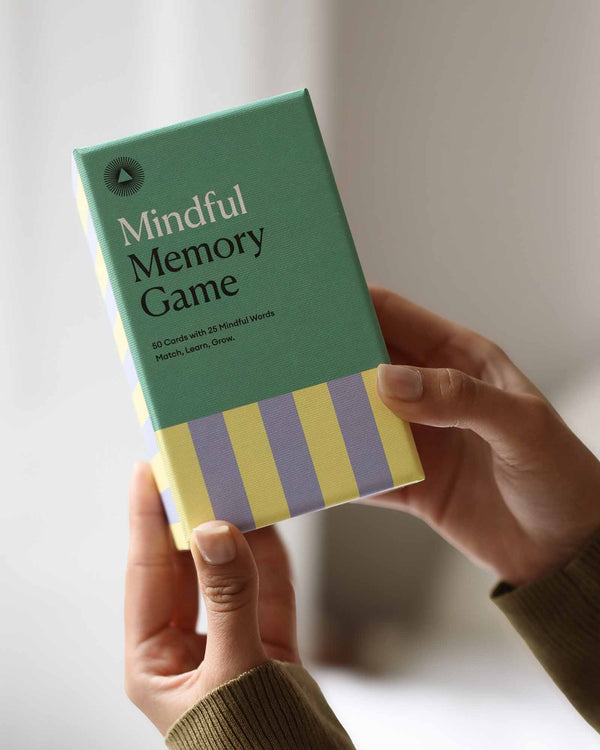How to Become More Conscious in Everyday Life
by Intelligent Change
Do you sometimes feel like you’re sleepwalking through your life? As if certain activities somehow happen without your total engagement and presence, leaving you confused, lost and unsatisfied?
Sometimes, we become so overwhelmed by information and technology overload and by the number of things we have to complete, that we tend to just switch to autopilot to get through the day, leaving some things unnoticed.
Do you ask yourself whether you’ve locked the door while you’re already in your car, 12 miles away from home? Do you want to feel fully present when spending time with your friends and family or doing some meaningful work? Full presence gives us more control over our lives and makes us more efficient in everyday activities, and this is a fact.
If you’re looking for ways to be more conscious and present in everyday life, you’ve come to the right place.
Becoming More Conscious in Everyday Life
The way we see it, consciousness is a spectrum that ranges from autopilot mode to total awareness.
When we operate at lower levels of our consciousness, we tend to feel bored, forgetful, distracted, uninspired, or lazy. This mindstate can be useful in certain situations, such as handling menial tasks, yet even in those cases, optimal levels of consciousness, or rather, awareness, could enrich our experience and make it more meaningful.
On the other hand, when faced with a full schedule, maintaining a higher level of consciousness is very important, and slipping into a distracted mode can be harmful on many levels.
People often mistake consciousness for egocentrism and focusing on themselves, when in reality full awareness means giving your mindful attention to the people around you and your environment. It means focusing on what’s happening in a given moment, instead of wandering off into thinking what awaits, or what’s already behind you.
But what does it mean to be truly aware in everyday life? How to approach the challenges of human life free of judgment? How to keep a positive focus when we’re overwhelmed by information, worry, anger, resentment, or sadness?
We’ll share with you some techniques and exercises anyone can implement into their daily routines to enhance consciousness and awareness on an everyday level.
But first, let’s briefly go over the exact benefits of becoming more conscious in everyday life.
The Benefits of Becoming More Conscious in Everyday Life
What are the real benefits of becoming more conscious in everyday life? Why would you care to enhance your consciousness?
We have to admit: this is more of a spiritual than a scientific topic, which is why it’s susceptible to subjective interpretation.
We define consciousness as achieving mastery over one’s mind. This short yet broad definition encompasses several aspects of human functioning:
- Understanding the people around you and your physical environment;
- Being aware and understanding your emotional, thought, and physical processes;
- Making deliberate, intelligent, and careful decisions;
- Maintaining a positive mindset regardless of the circumstances;
- Keeping your focus and knowing what’s important in any given moment;
- Having a rational and accurate idea of reality.
All of these represent the actual benefits of being more conscious, aware, and focused on day-to-day life. There are several steps you can take in order to get there.
1. Meditation

Although nobody knows how we, humans, ever became conscious, we do know that one of the best practices for elevating consciousness is meditation. Why?
There are many types of meditations: mindful, grateful, spiritual, focused, transcendental... Although they can be very different in practice, they all have one thing in common: they require our total presence in the moment.
Our mind is constantly producing churn and chatter. The more we feed it, the louder it becomes. We always search for things to do, to watch, to worry about. When we live our lives this way, we choose distraction over presence and tend to neglect the whole world that exists within us. Meditation is the way towards making contact with our inner world, consequently making us more aware, in control, creative, and productive.
Today we mostly practice secular meditation, but this practice has been with us for centuries. Various cultures and religions have been incorporating meditation into their standard rituals since times immemorial.
Meditation can open new horizons; it can help us recall old memories, process difficult emotions, get inspirational creativity flashes, and improve our sleep.
Scientific studies have revealed that meditation holds both mental and physical health benefits. It can help with irritable bowel syndrome, psoriasis, fibromyalgia, chronic pain, anxiety, depression, and PTSD. However, do note that, although useful, meditation is not to be considered a substitute for proper medication where needed. Always consult with your doctor.
That said, in the paragraphs that follow we’ll share with you some of our favorite meditations that you can easily practice at home. We chose those that have everyday life consciousness in their focus.
Mindfulness Meditation
This type of meditation is the most popular meditation practice in the West. It originates from Buddhist teachings and focuses on the following:
- Paying attention to your thought process;
- Being non-judgemental with your thoughts;
- Not engaging in your thoughts;
- Observing your thoughts and noticing patterns.
Mindfulness meditation trains our concentration and awareness. It helps us rediscover our bodily sensations, feelings, and thoughts. It’s very easy to practice it alone and you don’t need any external instruction from a teacher. However, there are some great guided meditations you can find online.
How to Practice Mindfulness Meditation
- Find a cozy and quiet spot in your home;
- Remove all distractions including your phone;
- Lie down or sit down in a comfortable position;
- Breathe in and out 10 times and focus on your breathing;
- Hold your breath 10 counts, try to ignore any thoughts that come to you. Let them pass;
- Exhale for 10 counts;
- Repeat this cycle five times;
- Stay focused on your body. If you feel tight in some body parts, try to relax them;
- If a thought crosses your mind, let it go and refocus on breathing.
This is the basic outline for practicing mindfulness meditation, however, you can also find more detailed guides online.
Focused Meditation
This meditation can rely on any of your five senses. For example, you can choose to focus on your breath, listen to a certain repetitive sound like a gong, watch something hypnotizing and relaxing such as candle flame, or count something like a chaplet or mala beads.
Although this meditation can sound simpler than mindfulness meditation because there is something concrete you can stick your focus on, it’s actually quite difficult. If you’re a beginner, you may be unable to keep your focus for longer than 2 or 3 minutes. If you decide to practice focus meditation and you notice that your mind is wandering, try to refocus every time by starting over.
How to Practice Focus Meditation
- Find a cozy and quiet place in your home;
- Sit or lay down in a comfortable position;
- Pick the object of your focus: breath, candlelight, beads;
- Try to calm down all of your inner voices;
- Turn your attention to the focus target completely;
- If you fail, keep calm and start over.
If you’d like to know more details about focus meditation, check out this longer guide, or test this YouTube guided focus meditation video by the Mindful Movement.
Visualization Meditation
Visualization meditation is an excellent technique that helps in enhancing one’s feelings, senses, focus, and presence. This method can be used to help you calm down and shift your mind to positive things.
Visualization meditation means imagining a scene and then adding as many elements and details as possible to engage all of your five senses. The images should be calming and positive. They can also involve you succeeding at something important or achieving a certain goal. This is meant to help you increase your focus and motivation.
How to Practice Visualization Meditation
- Once again, find a comfortable and quiet spot in your home;
- Sit or lay down in a comfortable position;
- Try to relax all parts of your body;
- Visualize a place that makes you feel calm and happy. It can be somewhere you visited already, or somewhere you’d like to go;
- Use all of your senses to enhance the imagery: can you hear or smell something? Are you warm or cold? Are your feet touching something and what? Is the weather bright and sunny, or dark, foggy, or stormy?
- Imagine yourself in that scenery, try to calm down, and breathe slowly. Experience the image to the fullest;
- Every time you inhale, try to imagine harmony entering your body and mind, and with each exhale, imagine stress and negativity leaving them;
- Leave the meditation slowly, when you feel ready.
If you feel like you need some additional support for your visualization meditation, check out these creative scripts. They might inspire you to create your own scripts.
If you want to practice visualization meditation that involves you achieving your goals, the procedure is slightly different.
- Imagine your goal, whatever it is: changing something about your character, getting a promotion, learning a new skill;
- Imagine yourself achieving this goal: who is with you? How do you feel? Where are you? Add all the details you can possibly imagine and activate all of your senses;
- If any doubts occur, fight them off. Having a motivational mantra can help;
- Focus on your motivational mantra, breathe deeply, and stay in the moment of achieving your goal as long as you can;
- Leave the meditation slowly when you’re ready.
2. Spend Time Outside

Modern-day jobs often keep people attached to their computers throughout business hours, but we also spend a lot of time on our digital devices in our private lives as well.
We take photos with our mobile phones, scroll social networks, write messages and emails, watch series and movies, play video games, read articles online, search for recipes, and whatnot.
Although life is much simpler when you have everything in one place, the whole knowledge of this world packed into a single device with Internet access, there are certain downsides to it:
- Spending too much time sitting is very unhealthy (which is why you could use a standing desk);
- We can lose our focus and consciousness due to exposure to too much information online;
- We don’t get enough fresh air;
- We can lose contact with ourselves, the people around us, and nature.
Spending time outside, in the local park, at the beach, or in the forest, should be a must-do for anyone who wants to keep their sanity and regain consciousness and contact with themselves. Natural scenery has proven very helpful in helping us fight off worry and negative thinking and regain our focus and consciousness.
How Can Nature Help Me Enhance My Consciousness?
You can combine different techniques for raising consciousness in everyday life and spend your time in nature meditating, keeping a journal, practicing people watching, or doing nothing (see below).
One way or another, nature is an extremely important part of our lives. Modern life, with all of its benefits, is detaching us from this source of calm, inspiration, focus, and consciousness. If you feel like this vibes with you, perhaps you should consider scheduling for spending some time in nature daily or weekly, and making it a priority almost as important as work.
If you choose to meditate in nature, you can, for example, try to relax your eyes looking at a certain scenery, but not focusing on anything in particular, fully embracing the panorama.
You can also go a few steps further and contemplate various properties of nature through philosophical questions. For example, if you’re sitting by a river, you can observe it and then look away. When you look back, is it still the same river? If a tree falls down in the forest you’re walking through and you can’t see it, did it really fall down? Whatever your question, try to think it through as deeply as you can and elaborate on the answer.
Observing nature, asking yourself about its various characteristics, and trying to give shape to your own understanding of nature can help you gain more insight into your feelings and thoughts and make you feel more connected to the world around you.
3. Practice People Watching

Do you ever go out in the park, look outside your window, or sit in a cafe or a restaurant all by yourself and watch the people around you?
It can sound a bit weird, we know, however, people watching can have an inspiring effect on us. But how does it wake our consciousness?
As we start analyzing the people around us, we are actually keeping our minds from wandering off. We’re present in the moment, highly analytical, and sensitive to various signs from reality. We start asking ourselves questions:
- Are these people locals or foreigners?
- What is the nature of their relationship (if there is more than 1 person you’re watching)?
- Are they happy, sad, anxious, excited…?
- What are they doing and why are they here?
- Which body language signs can give answers to these questions?
- What can I conclude about them based on their clothes or looks?
This activity can be highly inspirational, as it pushes you to develop personal theories based on the subtle information you receive from the environment you’re spending time in, other people’s posture, movements, accessories, proximity to each other, facial expressions, etc.
It makes you more susceptible to your reality. The same way you use your body to deliver certain information, you can observe other people’s body language to figure them out psychologically.
In their book about people watching and its importance for social perception, authors Kerri Johnson and Maggie Shiffar argue that the body is the most important stimulus which defines the way we perceive ourselves and others. It gives us information about emotional states, attitude, the nature of our relationship with another person, and so much more.
Becoming more aware of these subtle signals is a sure way towards achieving greater levels of everyday consciousness, especially in our relationships with other people.
How to Practice People Watching?
Look outside your window or go out to a public space. It doesn’t have to be too crowded, but there should be other people present. A local park, your favorite street, or cafe are good options. You can also practice this to kill time while waiting in line at the bank, for a doctor’s appointment, or at the supermarket. The place is really not that important, what’s important is that you can observe another human being and train your focus.
There are several aspects to analyze:
- The person’s identity: whether they’re a serious someone in business or a student. Are they sportive, do they play an instrument (hint: hands), are they fashionable, or are they into art? Do they have any tattoos that reveal something about their subcultural preferences or that mark important life events?
- You can make conclusions about a person’s attitude by analyzing their posture. Are they keeping their shoulders bent and their head low as if they’re trying to hide, or do you notice them sitting straight like they’re courageous and have nothing to hide?
- By noticing someone’s facial expression combined with body posture, you can tell a lot about the way that person feels. We easily reveal our emotions with our facial expressions and the way we sit or stand. If you notice lips curved downwards combined with half-closed eyes the person is probably sad, while frowning eyebrows and nervous active movements can tell us that someone is angry or frightened.
- You can also observe a person's various personality traits: for example, how agreeable (cooperative) they are? Are they nice and warm towards other people, or do they seem cold and reserved? If they seem to be talkative and always smiling or trying to catch another person’s eye, they’re most likely extroverts, while those who sit and mind their own business quietly, without using too many words, are most likely introverts.
Find out more about people watching in this detailed guide created by Psychology Today experts.
4. Practice Gratitude

Often neglected, yet so simple, the practice of gratitude is one of the most efficient and probably the most beautiful ways of elevating your consciousness in everyday life.
How often does it happen that someone does something nice for you and you don’t spend time truly appreciating it, leaving this moment of joy and kindness unnoticed? You might say a quick “thank you”, but do you actually mean it and how long does it take before you completely forget about that?
Practicing gratitude has various benefits for us and they’re all related to enhanced consciousness as well. It helps us become more resilient to stress and gives us a positive outlook on life. Even when there are bad things going on, grateful people tend to see the light at the end of the tunnel. Practicing gratitude helps us sleep better at night and can improve our physical wellbeing. Not to mention that it’s an excellent remedy against depression, anxiety, and other mental health issues.
But how exactly can gratitude make us more conscious in everyday life?
Remember how we spoke about the autopilot mode?
When you start practicing gratitude, you need to exit that mode every time you want to exhibit this emotion. People who practice gratitude become more and more aware of the positive ongoings in their lives, no matter how hard life gets.
They become alert and more sensitive to positivity. They start seeing things more rationally because they always search for two sides of the medal.
As they progress in their gratitude practice, they become more present in the moment and more conscious.
How Can I Practice Gratitude?
There are several ways of practicing gratitude, from implementing it into your communication with other people to undertaking certain exercises such as gratitude meditation, or gratitude journaling.
Grateful Meditation
If you’re a beginner in gratitude meditation, you should start with something simple. The goal is to give praise to certain things in your life or your environment. For starters, it can be something like the warmth of sunlight on your skin, the comfort of your bed, or the sound of nature in your nearby proximity.
- Take a comfortable position in a calming and pleasant spot (outside or inside);
- Pick one thing you’re grateful for and just notice it;
- Allow that thing to penetrate your experience;
- As gratitude arises, let it fill your mind and heart with warmth;
- Now you can take your meditation to the next level: think about someone you encountered today who has been supportive or pleasant to you;
- Think about how you’ve benefited from that experience;
- Once again, allow gratitude into your system and just be with it;
- You can continue enhancing your meditation further as long as you like;
- When you feel ready, exit the meditation.
Keep a Gratitude Journal - The Five Minute Journal
Whether or not you decide to go for gratitude meditation, which is an excellent extension of this practice, you can also dedicate your time solely to gratitude journaling.
It doesn’t take much time of your day, you can always follow up on your progress and re-read your entries, and, if you’re consistent with your grateful journaling, it will elevate your consciousness in no time.
We’ve designed The Five Minute Journal to take up only 5 minutes of your day every morning and evening, and all you need to do is fill out three prompts about the things you’re looking forward to, things you’ve learned today, what would make your day great, or how you could’ve made it even better, depending on whether it’s time for an evening or morning session. You can also modify your prompts so they fit your needs better, just like Tim Ferris did.
If you’d rather go digital, we also have The Five Minute Journal app available for Android and iOS.
Express Gratitude in Communication with Others
Apart from these exercises, you can also try expressing your gratitude to other people more often. Although, we’re pretty convinced this will come naturally to you as you start keeping a gratitude journal or practicing grateful meditation.
It’s not just about saying “thank you” to polite strangers who made your day, it’s also about reminding people you love why you appreciate them and exactly how much.
5. Keep a Journal

Do you keep a journal? If not right now, have you ever kept one?
If “yes” is the answer to at least one of these two questions, you certainly do know about the numerous benefits of journaling. Keeping a journal can help us maintain our sanity in stressful times, reflect on our various experiences, help us combat mental issues, keep track of our important events, relieve stress, and so much more.
Dedicated journalers might say that their diary is their friend, their external mind, their mindful listener, their place of quiet joy within, their life companion. Keeping a journal is an excellent way of keeping in touch with your inner self and, consequently, becoming more conscious in everyday life.
Now, you may be wondering how a tiny notebook filled with your thoughts can elevate your consciousness?
Journaling and Becoming More Conscious in Everyday Life
There are so many ways of writing into your journal, each of them addressing our various needs.
- Bullet lists;
- Mind maps;
- Planning;
- Brainstorming ideas;
- Essay writing;
- Poem writing;
- Drawing;
- Collage making;
- Expressive writing;
- Reflective writing;
- Careless writing, etc.
The list could probably go on and on. Your journal is the place where you can share and reflect on anything, it’s your safe space for thoughts, ideas, reflections, plans, memories.
Putting your thoughts down on paper can help you gain more clarity about certain situations in life. Also, describing events or conversations you’ve had can help you gain more insight into your thought process and the dynamics of your relationships with others and yourself.
Knowing yourself better consequently leads to greater behavioral control and awareness which are necessary in the journey to greater consciousness. Keeping a journal can also help improve your memory and function as a record of important events and ideas in your life.
Find out more about the various types of journals to keep on our blog.
6. Activate Your Senses

Becoming more conscious in everyday life can also mean activating all of your senses to the fullest. As we allow the autopilot to take over, we forget to observe, enjoy, and appreciate the amazing sources of information about the world around us we can gain through our five senses.
Activating our senses can stimulate our body and mind to heights we never would have imagined before.
For example, did you know that the smell route is anatomically close to the amygdala, our emotional processor? That’s the reason why sensing a familiar smell can quickly and easily return us back to childhood, or remind us of a certain place or a person.
Eating your food more slowly provides you not only with enhanced taste perception, but it’s also much healthier for your digestion.
Using your senses mindfully can help you feel calmer, enjoy here and now, and be fully present in every moment.
Another great example of how activating your senses and focusing on your current reality can help you become more conscious are the therapeutic techniques in cognitive-behavioral therapy. When someone is experiencing panic or anxiety attacks, this therapy suggests a method of activating your senses and focusing on the now:
- Feeling the chair you’re sitting in, its firmness or softness;
- Becoming aware of the clothes you’re wearing and how they feel on your skin;
- Noticing one object in your surroundings that’s constant and present, and focusing on it;
- Listening to a sound that’s happening right now.
How Do I Activate My Senses to Enhance My Consciousness?
- Smell the flowers when spending time in nature. Try to differentiate the smell of different flowers and enjoy them;
- Take some time to smell your morning tea or coffee and appreciate that moment;
- Rest your eyes by looking at the sky, trees, or a meadow;
- Listen to music, especially ambient music, jazz, or classical music, and try to really focus on the sounds you’re hearing;
- Listen to birds singing when in nature;
- Pet a dog or a cat and pay attention to their soft fur;
- Cook your food and eat it mindfully. That means slowly, and with focus. Focus on every bite and experience the taste to the fullest;
- Take some paint and apply it on canvas. You can do it with your hands as well and just enjoy the creative “mess”.
Whatever you choose to do, try to emphasize what you experience with your senses each day. You can also make a note about your feelings in a journal. Connecting and describing your experiences will surely elevate your awareness and consciousness.
7. Do Nothing

Modern life teaches us that we have to keep ourselves busy all the time. When we’re not being productive, we fill our time watching series, scrolling social networks, playing video games, or texting.
Modern life is so overly saturated with stimuli, it’s like an addiction: when we’re left alone with our thoughts, we often crave outside stimulation. How often do you just stand in line at the supermarket without scrolling your phone or listening to music? How often do you stare at the ceiling or the sky, without skimming through a book or browsing through the Internet?
Yet, spending time alone with your thoughts can be a crucial part of becoming more conscious in everyday life. It can have meditative qualities, although you don’t really have to meditate. Simply try to be with yourself.
Even though you probably don’t have any proximate memories of yourself doing (or better say consuming?) absolutely nothing, you might remember this feeling from childhood, and those less distracting years before the era of phones, computers, and other shiny digital devices that keep us awake until late at night. Try sitting at the table (during your break at work or at home, after finishing your meal) or laying on your bed, and stare, imagine, think, daydream. This way, your brain recharges and prepares for a more conscious state of being.
How to Do Nothing
Why do we have to do nothing? Well, for a generation that processes billions and trillions of pieces of information on a daily level, taking some time to do nothing might be necessary. Here is how you can start:
- Relax in a comfortable position and let your mind wander.
- After a few minutes, you might feel a reflex to grab your phone: process this and make a conscious decision not to do that.
- Next, you might feel anxious or maybe even weird. That’s fine, it’s just a consequence of craving external stimuli. Process this as well, and try to be with yourself.
- Spend at least 15 minutes to half-an-hour the first couple of shots. Maybe you’ll succeed from the start, and be able to implement the “doing nothing” into your daily routine. If not, keep trying. If you were able to do it as a kid, you’ll be able to do it now.
After some practice, you’ll start noticing how creative ideas, insights, memories start popping up or you’ll just feel more relaxed. Appreciate that feeling.
8. Take Care of Your Health

By making a choice to be more mindful about your health, you’re also choosing to be more conscious about all the ways you impact your health with your behavior.
Try to analyze your daily routines and actions. How do they impact your physical, mental, social, and emotional wellbeing?
Is the way you spend your mornings beneficial for your health or not? How does the food you eat impact the way you feel every day? Can you locate the problematic areas of your behavior and think about the following:
- Is there one thing you can do differently this week or today to be healthier? Start small: change your breakfast routine, go for a walk after lunch, drink less alcohol. Then, you can slowly kick it up a notch by implementing a productive morning routine or doing a short exercise sequence each day. Make mindfulness “your thing”. At your work desk, while you’re preparing your meals and eating, listening to music, spending time with your friends or family. Make a conscious decision to be fully present in each of these moments, and try to follow up on that.
- Connect with your body, understand its needs: when it’s tired, hungry, or craves activity. Analyze how your body reacts to different thoughts, emotions, or events in your environment.
9. Practice Conscious Thinking

Becoming more conscious on a daily level also means challenging your regular thought-practices, especially those that are deeply ingrained in your mind, the beliefs you take for granted.
Most of us go through our lives not realizing how privileged, lucky, or unfair we are in certain situations. We’re rarely fully aware of various “core beliefs” and assumptions that further build out attitudes and values.
Identifying, rethinking, and questioning these beliefs is a road towards changing potentially toxic behavioral and cognitive patterns.
So far, social psychology has taught us various lessons about prejudice, stereotypes, defense mechanisms, and biases we succumb to without being aware of it. If we do not rethink our actions and beliefs and simply believe we’re always right, we’ll fall into a narcissistic void that’s very toxic and hard to get out from.
How to Practice Conscious Thinking
Some of the advice we already shared in this detailed guide are tools that help us practice conscious thinking: keeping a journal, practicing gratitude, meditating.
However, you can go a few steps further and engage in some of the following activities:
- Read books. Understanding characters, stories, motivations, and relationships can help you think more consciously. Read about biases, prejudice, and discrimination, or stereotypes. These are not just some scientific concepts that don’t concern you. They’re our reality. Learn how to recognize them in your environment and, more importantly, in your behavior, as well as how to change and react to them.
- Try to look at people around you from a more mindful and neutral point of view. Try to stay unbiased and neutral in conflicts, and to observe, rather than engage.
- Learn new things every day, be it a new professional skill, language, or a new dance. Make the decision to engage in lifelong learning, open your mind, and set some time aside for this.
- Practice active listening with your interlocutors, be it your friends, family, community, or colleagues at work. Allow people to finish their sentences, show interest in what they’re talking about, ask them to tell you more about the topic, or summarize what they just said to confirm whether you got it right.
Final Word
As you’ve probably realized by now, there are so many things you can do to become more conscious in everyday life. From meditation and enjoying nature to journaling and taking care of your health.
Raising consciousness is not only about taking care of yourself, it’s also about focusing on your environment: the people around you, nature, sounds, smells, and your thoughts. If you want to become more present in your life, you need to truly want to achieve this and make a concious decision to take a step forward and make a significant change in your life.









